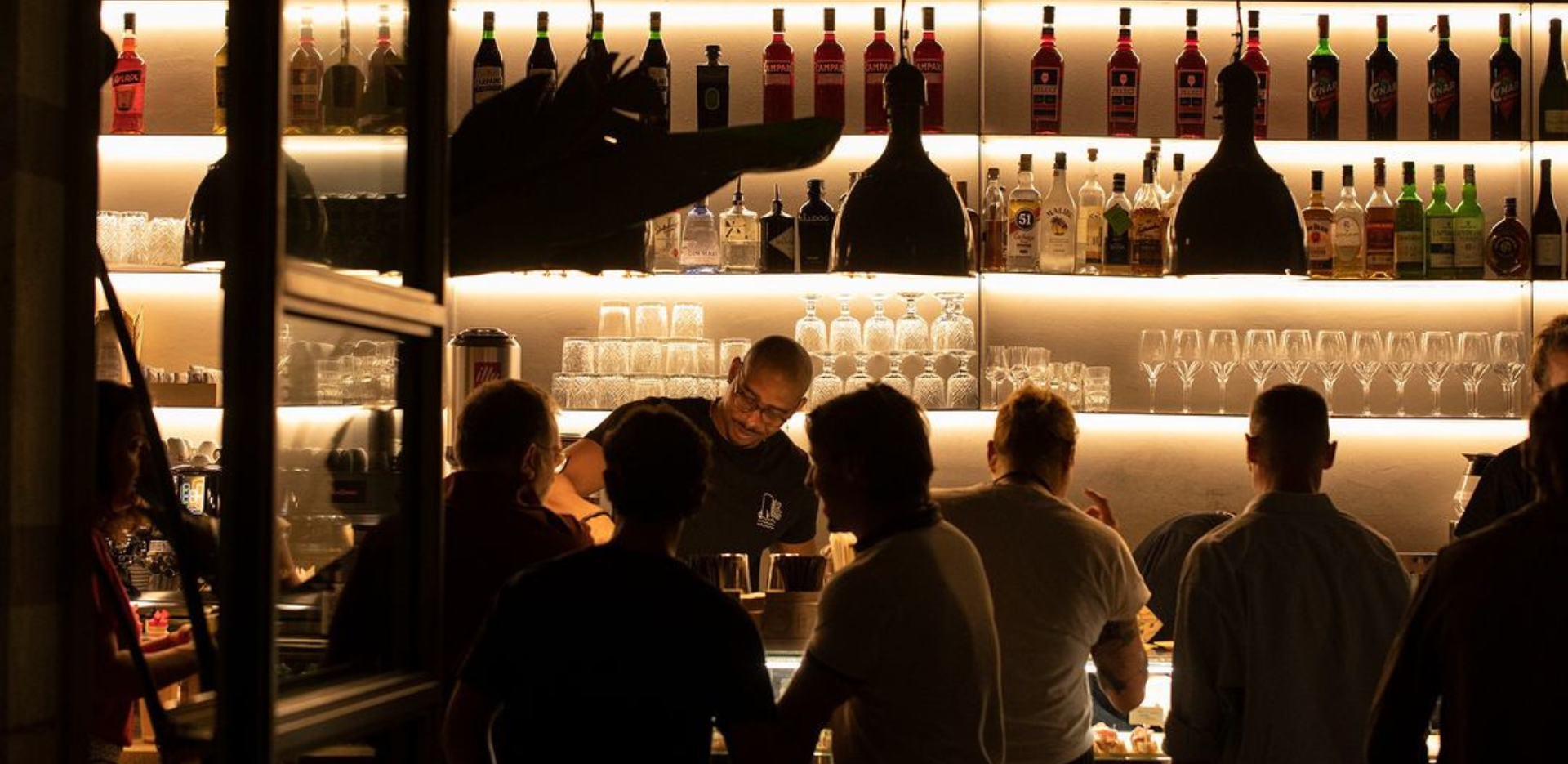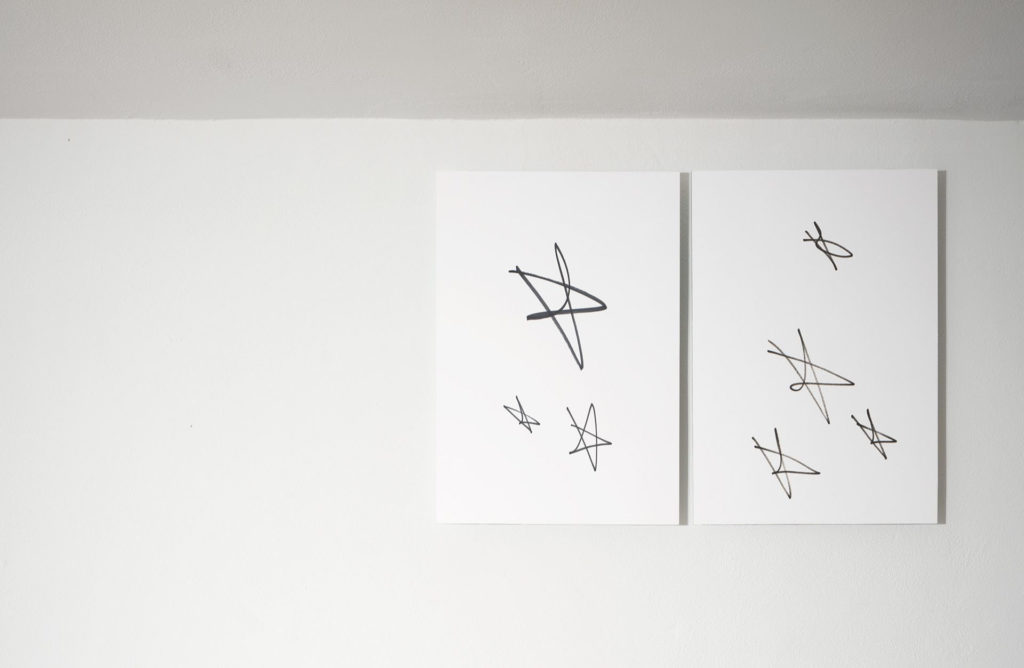many possible cities
Cinema Programme
New York Metamorphosis
Saturday 22 February
Two screenings:
h 6 pm & h 8 pm
Please click on the button JOIN at the top right to book your free entry.
An exploration of the metamorphoses in the landscape of New York during the twentieth century.
Six films, from 1921 to 2009, in which we see the protagonist, the Big Apple, slowly evolving over time. From documentary to experimental, each film captures this ephemeral flow of sensations and fleeting impressions, tracing their way across the urban geography of New York: a modernist vision through the geometric character of the New York’s 1920s architecture (P. Strand / C. Scheeler), travellers filmed in bright Kodachrome colours, accompanied by the music of Duke Ellington (DA Pennebaker), the rituals of Williamsburg’s Lithuanian immigrants (J. Mekas), the ballet of commuters in the Grand Central hall (J. Scher), and finally visions of the night (P. Clipson) and the kaleidoscopic (T. Nishikawa), to end the session.
The New York Metamorphosis Cinema Programme is part of Many Possibile Cities festival
many possible cities
Light Cone is a nonprofit organization whose aim is the distribution, promotion and preservation of experimental cinema in France and around the world.
LIGHT CONE’s Documentation Center offers a unique collection of written and audiovisual documents for consultation by researchers and programmers. With the addition, in 1999, of the Experimental Film Archive of Avignon (AFEA), the Documentation Center includes over 5,000 print documents (books, periodicals, catalogues), nearly 12,000 audiovisual documents (digital files, DVDs, Blu-Rays, audio and video tapes…) and 1080 thematic records (biographical and institutional files).

Emmanuel Lefrant lives and works in Paris, where he makes films, all self-produced, exclusively on celluloid. The films lie on the idea of representing, of revealing an invisible world (the secret forms of emulsion), a nature that one does not see.
In 2000, he founded with Nicolas Berthelot, Alexis Constantin and Stéphane Courcy the collective Nominoë. They created together performances which have been played in many prestigious places, as the Pompidou Centre, the Serralvès Foundation (Porto) or the Edinburgh International Film Festival (Black Box Live).

MANHATTA
by Charles SHEELER & Paul STRAND

1921 / Digital file on server / b&w / silent / 24 ips / 9' 00
“The painter Charles Sheeler picked up photography in the 1910s in order to make a living, since his new geometric paintings were not selling well. He then became increasingly interested in the expressive possibilities of the camera. He decided to make a film in collaboration with the photographer Paul Strand. Their collaboration resulted in a impressionist representation of a hymn to the city by Walt Whitman, and is characterized by a style that is more photo-secessionist than realist. It was also the beginning of the brilliant cinematic career of Paul Strand”. William J. Sloan
DAYBREAK EXPRESS
by D.A. PENNEBAKER

1953 / 16mm / color / sound / 24 ips / 5' 00
“I wanted to make a film about this filthy, noisy train and it’s packed-in passengers that would look beautiful, like the New York City paintings of John Sloan, and I wanted it to go with one of my Duke Ellington records, Daybreak Express.
I didn’t know much about film editing, or in fact about shooting, so I bought a couple of rolls of Kodachrome at the drugstore, and figured that since the record was about three minutes long, by shooting carefully I could fit the whole thing onto one roll of film. Of course that didn’t work since I couldn’t start and stop my hand-wound camera that easily so I ended up shooting both rolls and even a few more before I was through. It took about three days to film, and then sat in a closet for several years until I figured out how to edit it and make a print that I could show on a projector.
I took it to the Paris theater to see if they would run it. By pure chance it ended up with the Alec Guiness comedy, The horse’s mouth which ran there for nearly a year. Since I had a large collection of jazz records, I figured I’d found a way to break into the film business with music films, and it did get me started, but I was never able to make another film like Daybreak”.
WILLIAMSBURG, BROOKLYN
by Jonas MEKAS

2003 / 16mm / color-b&w / silent / 24 ips / 15' 00
“Footage I shot in l950, my first year in New York, more precisely, in Brooklyn. Williamsburg was a small miserable part of Brooklyn inhabited at that time mostly by Lithuanian immigrants. That was my new home. Miserable home but home. And I knew that Henry Miller had lived in Williamsburg, I passed his house every day. So I was happy to be there. And I was free! I was free and I had just acquired my first Bolex camera.”
GRAND CENTRAL
by Jeff SCHER

1999 / 16mm / b&w / sound / 24 ips / 15' 00
“In 1989 the East window of Grand Central Terminal in New York City was re-opened after being sealed off from view for over 40 years. The light that flooded in was glorious. The sun lined up with the canyon of buildings in front of the window for about a half hour a day in the early spring. I was teaching upstate at the time and would pass through the station twice a week. The film was shot on the way to the train. It was filmed with one of the first 16mm cameras ever made, a Bell and Howell Filmo 75 and also a Beauleau R16. It was shot on sound recording film and a bit of tri-x and then printed onto sound recording film. This film, the nature of the light and some of the un-coated antique lenses I used give the film it’s ‘period’ look. Filming the light, and regarding people and archecture as ‘light modulators’ was my point of inspiration. I tried to capture the spontanious choreography of the hustling crowds in a sort of Balletic way. The film is a city ballet (as oppossed to a city symphony)”.
Music by Shay Lynch.
CHORUS
by Paul CLIPSON

2009 / 16mm / color-b&w / sound / 24 ips / 7' 00
Three cities become one in this unblinking nocturnal collage of images and sounds in which space, color and light move through the eye of the camera to create thoughts visualized before their conception. Shot in San Francisco, New York and Rotterdam.
45 7 BROADWAY
by Tomonari NISHIKAWA

2013 / 16mm / color / sound / 5
Un film sur Times Square, les sons et les mouvements de cette célèbre intersection. Le film fut tourné en noir et blanc avec des filtres couleurs (rouge, vert et bleu) puis les prises furent refilmées avec une tireuse optique avec ces mêmes filtres. Les couches des différentes images tournées caméra à l’épaule créent une agitation dans les séquences tandis que les publicités sur les panneaux d’affichage tentent de s’extraire les unes par rapport aux autres.

